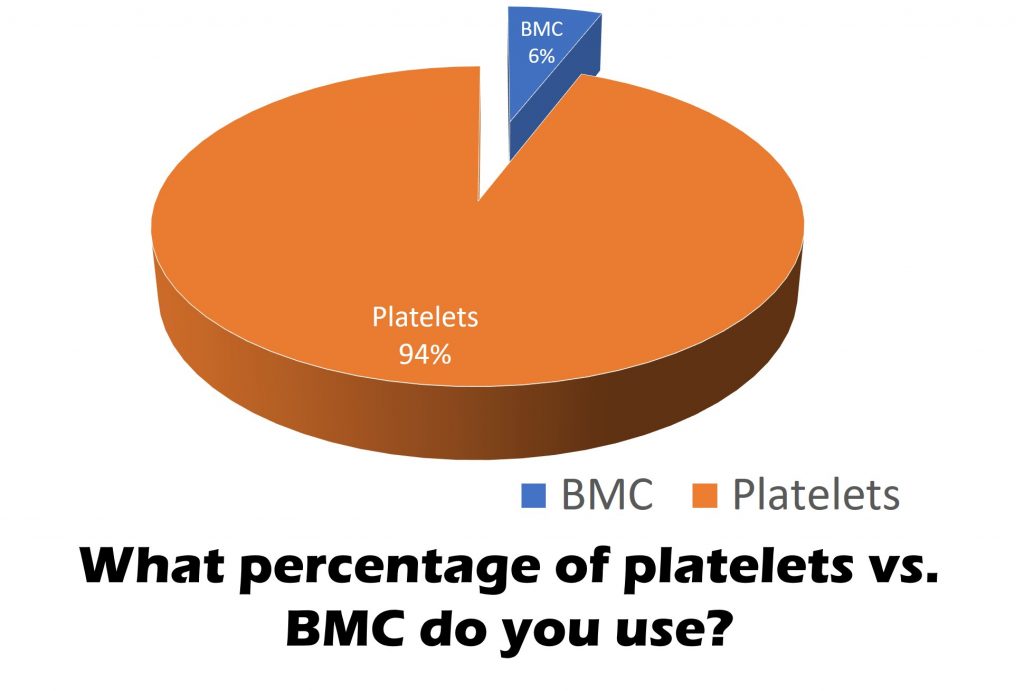Slamming Patients into Stem Cell Procedures They Don’t Need: PRP vs Stem Cells
While we were the first clinic on earth to use bone marrow stem cells to treat a myriad of common orthopedic conditions, the funny thing is, we have never used stem cells as our first-line orthobiologic of choice. Why? As I tell my patients every week, it’s my job to choose the least invasive, cheapest therapy that’s the most likely to work. If that’s stem cells, then great. If that’s something else that’s less invasive and less expensive, all my patients care about is that it helps their pain and gets them back to what they love to do. Let me explain.
The Stem Cell Wild West
There is so much fraud going on out there that it’s hard to fathom. First, we have an entire industry of practitioners delivering fake stem cell treatments via amniotic fluid and umbilical cord tissues, like blood and Wharton’s jelly. For more information on this problem, see my video below:
What Tools Do I Use?
The other day I did an experiment. I asked our practice CEO to pull data on the number of platelet-based procedures versus bone marrow stem cell procedures our Colorado HQ site performed in a given month. So this PRP versus Stem Cells analysis ignores all of the other stuff we use to focus on just those two categories. This is what he found:

In this comparison, as you can see, we used a platelet-based procedure 94% of the time while we used a stem cell-based procedure (bone marrow concentrate) only 6% of the time. First, this data is likely a little skewed toward platelets as we often use a PRP-based booster shot with and after stem cell procedures, so I think adjusting for that practice, we’re likely 85/15. However, you get the idea. We use an awful lot of platelets compared to stem cells. Why?
PRP vs. Stem Cells
First, think of platelets and PRP like espresso shots for local repair cells that help them work harder. Next, think of stem cells as a general contractor for the repair response. Why use PRP five times as often as stem cells? PRP works great for things like mild arthritis, small tears in ligaments and tendons, or in the spine. In fact, since our Colorado HQ does about half spine-based treatment, this skews our results a bit toward platelet use.
In the spine, we use three different types of platelet or plasma mixes. PRP is platelet-rich plasma: this is concentrated platelets from your blood. We tend to use this in spinal joints, like facets. Platelet lysate is made by breaking open the platelets and extracting out the growth factors. We use this around nerves because we find that it’s highly anti-inflammatory. Finally, platelet-poor plasma is the plasma without the platelets. We tend to use this in atrophied spinal muscles.
To get a sense of why we only use stem cells in the spine in very specific spots, watch my video below:
However, even once you leave the chiropractors, naturopaths, acupuncturists, and sleazy doctors offering fake stem cells, there’s still a big problem. Patients are getting slammed into bone marrow and fat stem cell treatments they don’t need. Let’s review.
A Toolbox
Using orthobiologics to help patients is like fixing a car or a house: it requires many tools. Think about what would happen if your carpenter only had a hammer in his toolbox. He wouldn’t get much done. No boards would be cut, no screws would get set, and no planes would be planed. The same happens with helping patients heal or manage orthopedic problems. It takes a lot more than stem cells.
So what orthobiologics can someone use in the U.S.?
- Platelet-rich plasma (many types and concentrations)
- Platelet lysate
- Platelet-poor plasma
- Cytokine-enriched plasma
- Adipose tissue
- Bone marrow concentrate
- Extracellular matrix
Hence, to do this right, the doctor has to have many tools in his or her toolbox and, like our carpenter, know when to use each one. However, all too often, we see doctors these days pushing all of their patients into stem cell procedures. Why? It generates the most income for the doctor.
Stem Cells vs. Platelets
Where stem cells really shine over platelets is in a few conditions:
- Torn and painful low back discs
- Bulging discs that can’t be treated by platelets alone
- Severe arthritis
- Larger tendon and ligament tears
Cost
An honest doctor always puts his or her patient’s well-being over his own income. Meaning, you choose the best therapies for your patient that are the lowest cost and least invasive. Platelets work well in many instances and cost anywhere from one-quarter to one-half as much as a stem cell treatment. So in the PRP versus stem cell equation, why not use platelets if we can get the same result for less money and through only a simple blood draw?
The upshot? Just like a carpenter, your doctor had better have more than one tool in his or her toolbox. Why? Because when all you have is a hammer, everything looks like a nail. In addition, your doctor needs to put your needs above his or her wallet. Oftentimes, that means that the best treatment for you may not be a stem cell treatment.

If you have questions or comments about this blog post, please email us at [email protected]
NOTE: This blog post provides general information to help the reader better understand regenerative medicine, musculoskeletal health, and related subjects. All content provided in this blog, website, or any linked materials, including text, graphics, images, patient profiles, outcomes, and information, are not intended and should not be considered or used as a substitute for medical advice, diagnosis, or treatment. Please always consult with a professional and certified healthcare provider to discuss if a treatment is right for you.